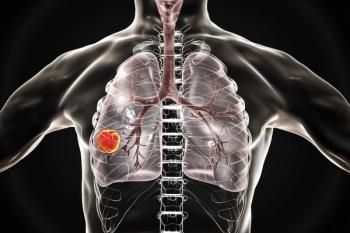
- Oncology Vol 29 No 4_Suppl_1
- Volume 29
- Issue 4_Suppl_1
(P067) The Role of Offline PET-CT Imaging in Evaluating the Particle Beam Range and Beam Stop for Prostate Cancer Treated With Heavy Ion Therapy
Posttreatment offline PET-CT imaging has the potential to evaluate the particle beam range and beam stop for prostate cancer patients treated with heavy ion therapy, which might overcome the pitfalls of simple bone structure fusions with two-dimensional imaging, and provides another approach to monitor the treatment accuracy of prostate cancer treated with carbon ion therapy. Further investigation needs to be performed.
Qing Zhang, Jingyi Cheng, Jiandong Zhao, Xiaomeng Zhang, Xin Cai, Jin Meng, Shen Fu; Shanghai Proton and Heavy Ion Center; Fudan University Shanghai Cancer Center; Shanghai Jiao Tong University, Shanghai No. 6 People’s Hospital; Shanghai Proton and Heavy Ion Center/Fudan University Shanghai Cancer Center
PURPOSE: To evaluate the possibility of offline positron emission tomography-computed tomography (PET-CT) in monitoring both particle beam range and beam stop after carbon ion therapy.
MATERIALS AND METHODS: From June 2014 to September 2014, a total of 19 patients with pathology-confirmed primary prostate adenocarcinoma underwent carbon ion therapy in Shanghai Proton and Heavy Ion Center. All patients received a PET-CT scan shortly after carbon ion therapy. We divided these patients into two groups; 3 of 19 patients were treated with a single lateral beam in the first 4 days of carbon ion therapy, followed by a bilateral beam from day (D) 5, and PET-CT images were collected on D1, D4, D11, and the last day of the treatment. Another 16 patients were treated with bilateral beam only, and PET-CT imaging was collected on D1, D4/5, and the last day of the treatment. After irradiation, patients were transferred immediately to the PET-CT room nearby the irradiation center. A PET-CT scan was done on a Siemens Biograph mCT 5–7 minutes after carbon ion therapy, with no additional radioactive tracer injection. PET-CT images were collected for approximately 30 minutes for each patient, while the patient’s position during the PET-CT scan was the same as during treatment using the same immobilization device. Finally, a total of 60 PET-CT images were investigated. PET-CT and planning CT were further registered by matching the pelvic bones. An additional comparison with the expected β+ activity distribution was performed to identify either beam range or beam stop with accurate anatomical coregistration.
RESULTS: Based on the different tissue densities, we found different activation effects shown on PET imaging, such as skin, bone, fat, and prostate. Compared with the diagnostic CT, the measured activity with different anatomic structures was correlated, which indicated an accurate beam range. For the three patients treated with single-beam irradiation, the PET imaging also indicated the beam stop well. Our data further showed that the PET-CT–defined beam range covered the clinical target volume well, especially for the isocenter, by matching the PET-CT imaging with treatment planning.
CONCLUSION: Posttreatment offline PET-CT imaging has the potential to evaluate the particle beam range and beam stop for prostate cancer patients treated with heavy ion therapy, which might overcome the pitfalls of simple bone structure fusions with two-dimensional imaging, and provides another approach to monitor the treatment accuracy of prostate cancer treated with carbon ion therapy. Further investigation needs to be performed.
Proceedings of the 97th Annual Meeting of the American Radium Society-
Articles in this issue
Newsletter
Stay up to date on recent advances in the multidisciplinary approach to cancer.


















































































